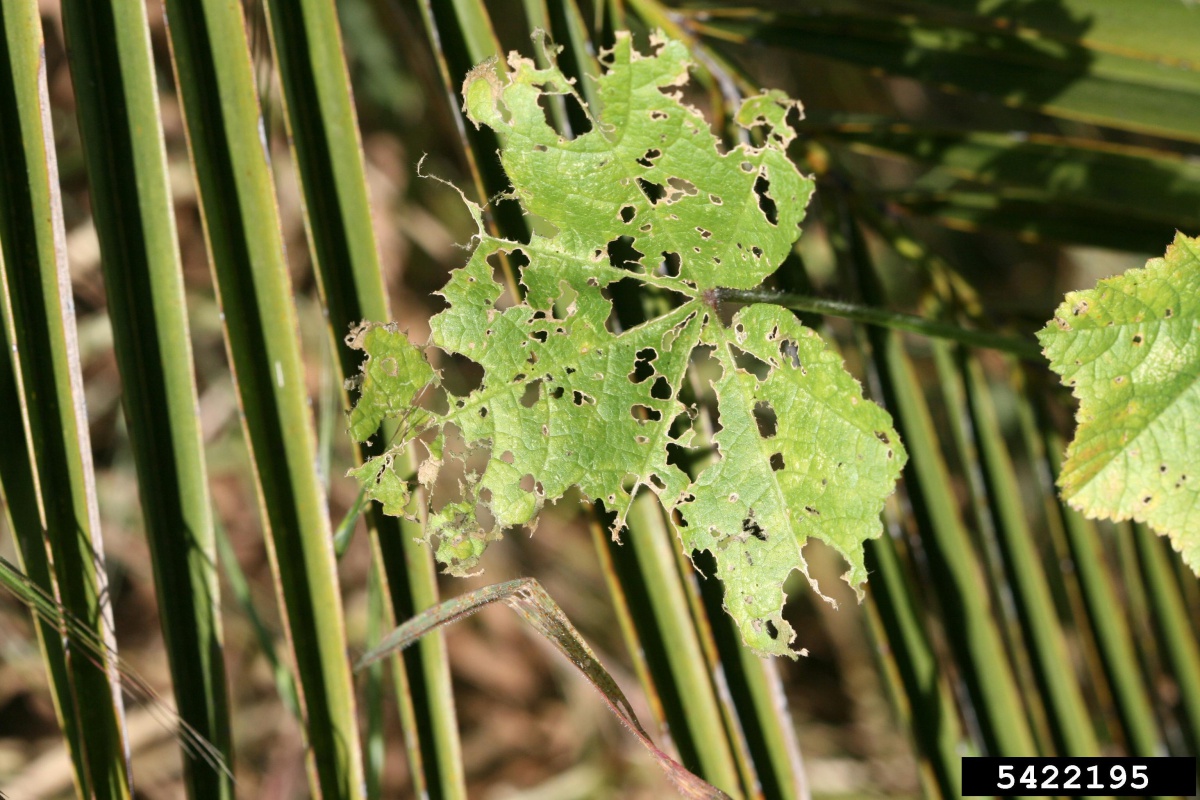The European earwig (Forficula auricularia) is a common pest of homes and gardens in New England and can be quite destructive to house and garden plants. Earwigs have a foul odor and often show up in unwanted places, such as around kitchens and bathrooms.
Description
The adult European earwig is reddish-brown and resembles certain beetles. Unlike other insects, it has a pair of forceps-like appendages on the end of its body. These appendages can be used to determine the sex of the individuals. Earwigs use their forceps both for defense and as an aid in mating. The wings of earwigs are very short, exposing the abdomen, and are seldom used for flying. The antennae are slender and very flexible. Young earwigs resemble adult females, but are smaller and lighter in color.

Alpert, Harvard University, Bugwood.org (photos); Alan T. Eaton (drawing).
Life Cycle
In New England, earwigs overwinter as adults. In early spring the female lays eggs in a nest in the ground and carefully guards the eggs until they hatch. The female broods her young until they are capable of caring for themselves. There are usually about 30 young in a brood.
During the day, the earwigs are inactive and hide in a variety of places in and around the house, such as in wet mops, flower pots, woodpiles, behind loose boards, at the base of trees, and in shrubbery. Earwigs become active at night and roam about feeding on a variety of things (e.g., garbage and various house plants). In the garden, they may damage dahlias, zinnias, butterfly bushes, lettuce, strawberries, celeries, potatoes, and seedling beans and beets. You can also find them in the ears of corn where they feed on silks.

University, Bugwood.org.
Management
IPM Strategies:
- Cultural Practices - Since earwigs are chiefly outdoor insects, eliminating their outdoor habitats, such as leaves and debris next to the house, help discourage their presence. It may help to ensure that basement and ground floor doors and windows are tight fitting. If the basement is damp, reducing humidity may make it less inviting for earwigs to enter, and cause those that do enter to die.
- Monitoring and Trapping - Cat food or tuna fish cans with 1/2” of oil (fish oil or vegetable oil with a drop of bacon grease) in the bottom can be used to monitor for earwigs. Place the can into the ground so the lip of the can is in line with the soil. Other traps include rolled up damp newspaper, or moistened cardboard tubes placed in shady areas of the garden at night. Check the cans and traps in the morning. Shake earwigs into soapy water. Several days of intensive trapping should significantly reduce the population.
- Chemical Control - Chemical control may be needed to eliminate a population that has built up. Outdoors, apply pesticides to areas around the foundation of the house where earwigs are seen. Treat the entire infested area except where indicated in the precautions stated on the pesticide label. Apply in spring when young earwigs are leaving their nests and again in midsummer if earwigs are troublesome. Consult your county Agricultural Field Specialist for specific pesticide recommendations.
Stop! Read the label on every pesticide container each time before using the material. Pesticides must be applied only as directed on the label to be in compliance with the law. All pesticides listed in this publication are contingent upon continued registration. Contact the Division of Pesticide Control at (603) 271-3550 to check registration status. Dispose of empty containers safely, according to New Hampshire regulations.
Download the resource for the complete factsheet.
